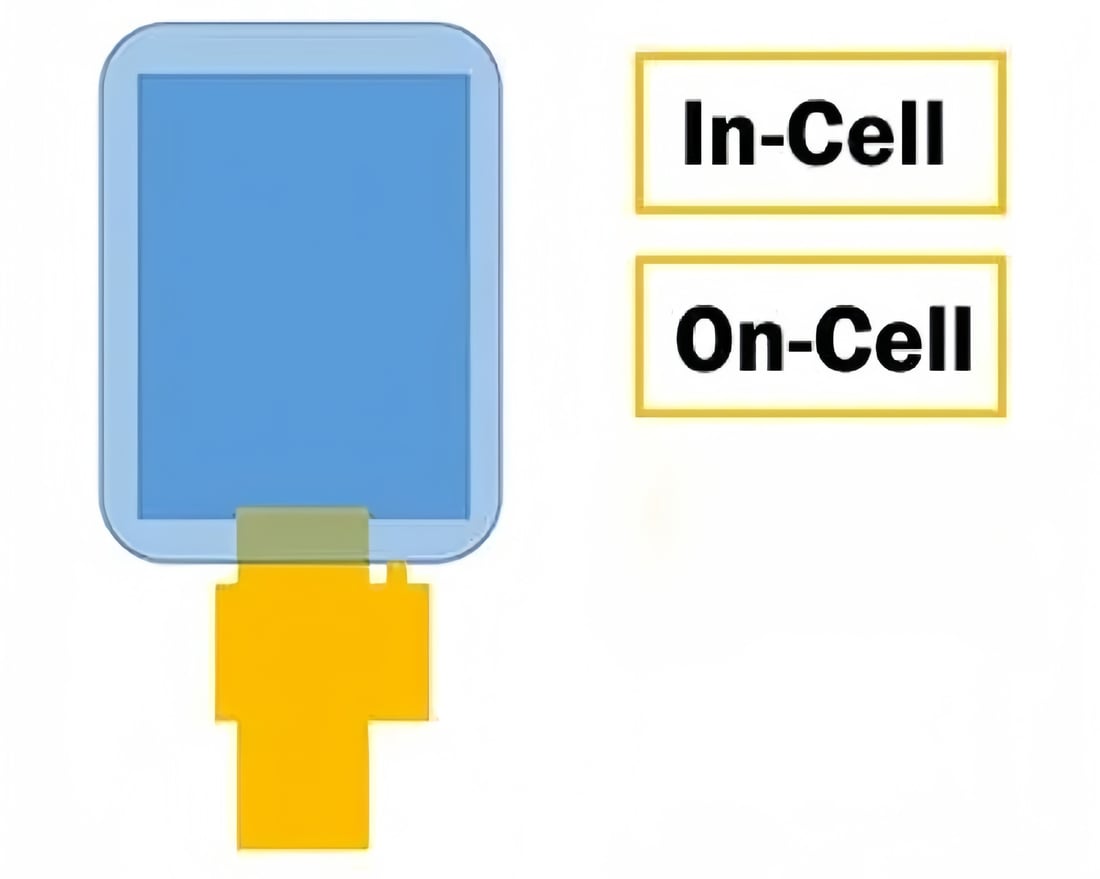In-cell and On-cell are two different structures in liquid crystal display technology, which are used to make thinner, lighter, and higher-quality displays. They have some differences in the construction of the LCD panel.
1. In-cell LCD (embedded LCD screen): In-cell technology integrates touch sensors into the liquid crystal layer. This means that the touch sensor is implemented with electrodes embedded in the liquid crystal layer, rather than a separate layer. This design reduces the overall thickness of the display because the touch sensor takes up less real estate. In-cell technology is widely used in some smartphones and tablets. Since the touch layer is integrated with the liquid crystal layer, it may cause maintenance and manufacturing challenges in some cases.
2. On-cell LCD (on-panel liquid crystal screen): On-cell technology is to place the touch sensor on the surface of the liquid crystal screen, but not embedded in the liquid crystal layer. This means there is still a layer of air or clear gel between the touch sensor and the liquid crystal layer. This design can simplify the manufacturing process, but may increase the thickness of the screen slightly, On-cell technology was used on some older devices, but still exists in some modern devices
Overall, In-cell and On-cell technologies are different approaches to achieving thinner, lighter, higher quality displays. Which technology to choose depends on the needs and priorities of the manufacturer, as well as the cost and feasibility of the technology.

